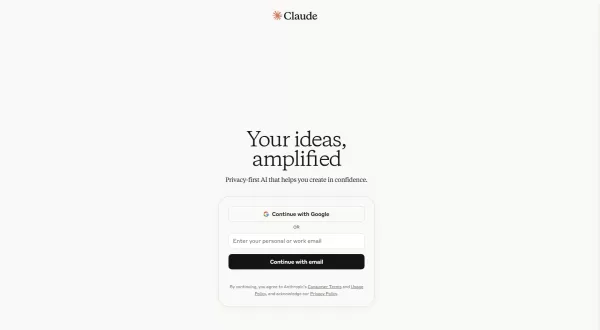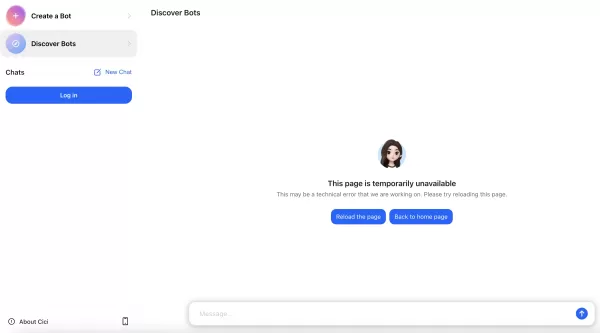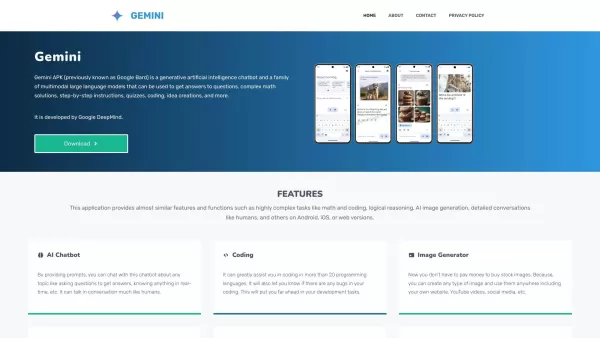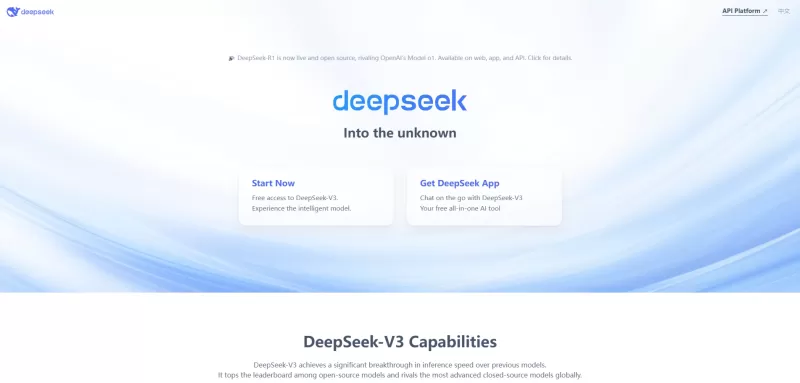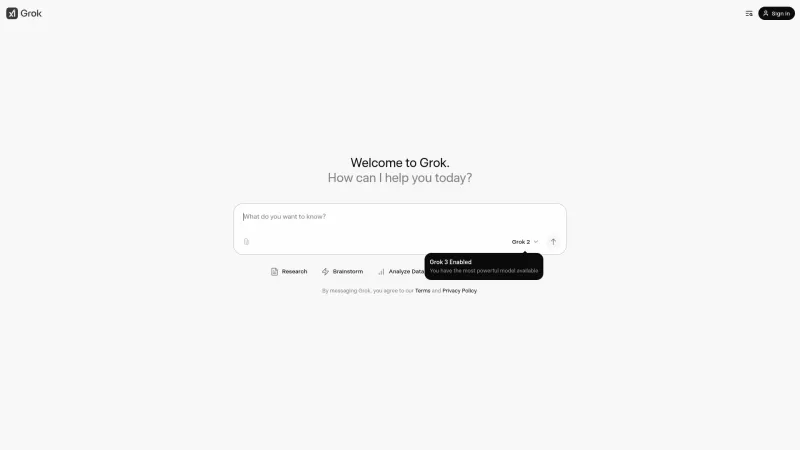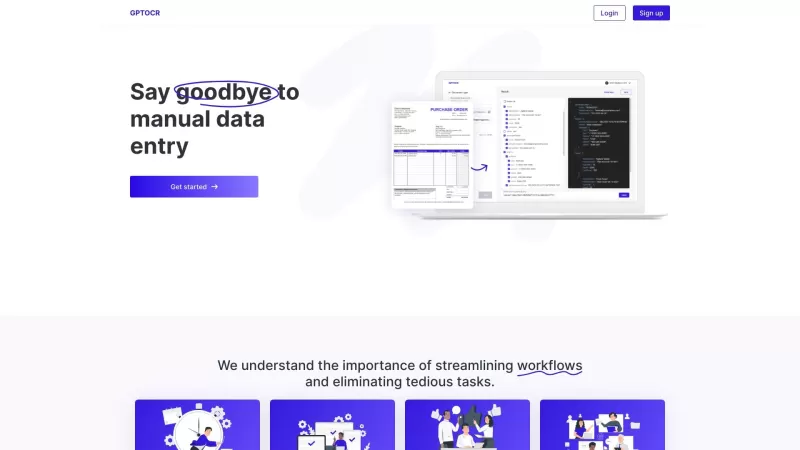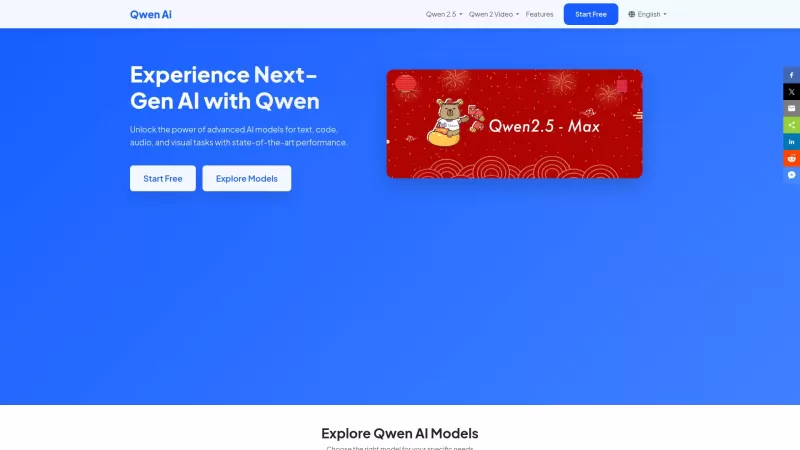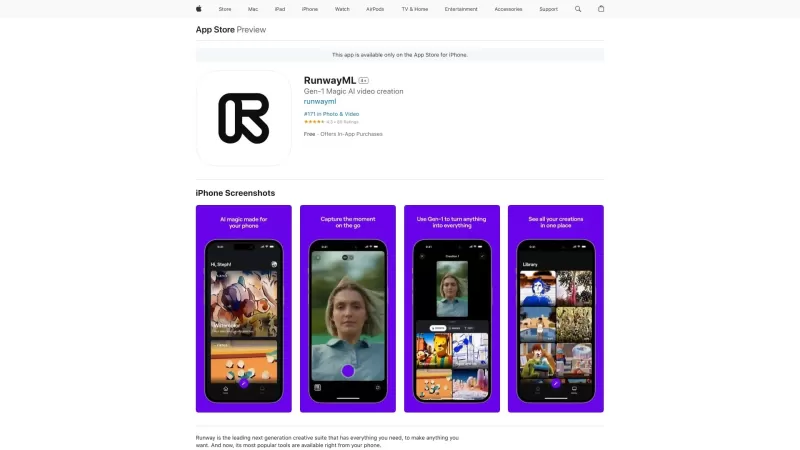Nightmare Fuel: Exploring the Depths of AI-Generated Horror Art
Artificial intelligence is transforming the world of art, particularly in the chilling domain of horror. AI image generators are now adept at producing images that delve into our deepest fears, crafting surreal and often disturbing visuals. This article will explore the eerie world of AI-generated horror art, from the monsters it invents to the haunting landscapes it creates, and the profound questions it poses about creativity and fear.
Key Points
- AI is revolutionizing the creation of horror art with its ability to produce highly realistic and unsettling images.
- The art often features monstrous beings and eerie settings that evoke a sense of dread.
- It raises important questions about the essence of creativity and the impact of human emotion on art.
- There are potential uses in entertainment, art therapy, and exploring human fears.
- Ethical issues, including copyright, ownership, and the potential for misuse, are significant concerns.
The Rise of AI in Horror Art
What is AI-Generated Art?
AI-generated art is produced using algorithms and machine learning models trained on extensive image datasets. These models learn to identify patterns and generate new images based on those patterns. In horror art, AI can be directed to create images from specific prompts, like 'a monstrous worm emerging from the sea' or 'a terrifying creature in a dark forest.' The results are often surreal and unsettling, challenging our traditional notions of art. The AI's ability to manipulate and combine existing images leads to truly unique and terrifying creations.
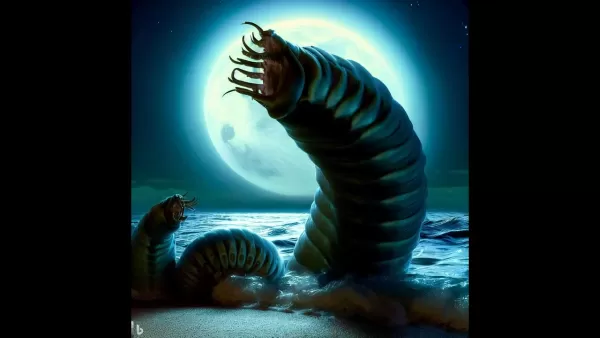
As AI technology advances, it becomes more sophisticated, capable of producing increasingly realistic and disturbing images. We can anticipate even more innovative and terrifying uses of AI in horror art as the technology continues to evolve.
The Appeal of AI-Generated Horror
The allure of AI-generated horror lies in its capacity to tap into our primal fears. AI can produce images that are both original and unexpected, often blending familiar elements in unsettling ways. These creations can bypass our conscious defenses, directly triggering our emotions and leading to a visceral, often disturbing experience. The sheer volume of images AI can generate ensures a constant flow of new and terrifying visions, pushing the boundaries of horror beyond what traditional art forms might achieve.
Moreover, AI-generated horror offers a unique lens through which to explore the nature of fear. By studying the images AI produces and the prompts that inspire them, we can gain insights into what truly frightens us as humans. This could have significant implications for fields like psychology and art therapy, helping us better understand and address our fears.
Types of Monsters and Eerie Landscapes
AI horror art manifests in a variety of spine-chilling images, showcasing monsters in unimaginable forms, from worms rising from the sea to trees with eyes that seem to watch you. These images tap into our fear of the unknown and the grotesque.
AI also excels at creating eerie landscapes that set the stage for terror and suspense. Whether it's a moonlit graveyard with looming tombstones or a claustrophobic, shadowy hallway, AI captures the essence of dread and isolation. Here are a few types of horrors created by AI art:
- Monstrous Transformations:
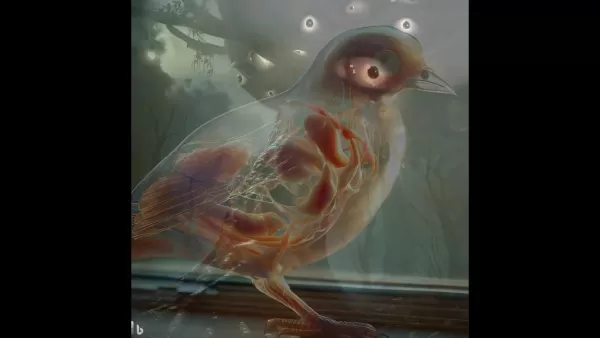 Humans are sometimes morphed into trees with eyes, blurring the lines between life and death.
Humans are sometimes morphed into trees with eyes, blurring the lines between life and death. - Cosmic Horror: Some images evoke cosmic horror, showcasing colossal entities that dwarf human comprehension.
- Body Horror: AI can create disturbing images that challenge our perceptions of physical integrity, showcasing the grotesque and macabre.
- Eerie Objects: AI transforms everyday objects into terrifying entities, such as an egg resembling an incubator.
Related article
 Learn to Build Basic AI with Wall Collision in Rec Room (2024 Guide)
Developing AI systems in Rec Room unlocks dynamic possibilities for immersive gameplay experiences. This comprehensive walkthrough demonstrates how to construct fundamental AI with collision detection, allowing your creations to interact realisticall
Learn to Build Basic AI with Wall Collision in Rec Room (2024 Guide)
Developing AI systems in Rec Room unlocks dynamic possibilities for immersive gameplay experiences. This comprehensive walkthrough demonstrates how to construct fundamental AI with collision detection, allowing your creations to interact realisticall
 Walmart Achieves Enterprise AI Scale With Unified Framework Driving Thousands of Use Cases
Walmart is pioneering enterprise-scale implementation of autonomous AI systems through an engineering-driven approach to trust architecture. Their VP of Emerging Technology Desirée Gosby revealed at VB Transform 2025 how the retail leader operational
Walmart Achieves Enterprise AI Scale With Unified Framework Driving Thousands of Use Cases
Walmart is pioneering enterprise-scale implementation of autonomous AI systems through an engineering-driven approach to trust architecture. Their VP of Emerging Technology Desirée Gosby revealed at VB Transform 2025 how the retail leader operational
 Windows Adds Support for AI App Interconnect Standard
Microsoft is doubling down on its AI strategy for Windows with two major developments: native integration of the Model Context Protocol (MCP) and the introduction of Windows AI Foundry. These foundational moves pave the way for Microsoft's vision of
Comments (2)
0/200
Windows Adds Support for AI App Interconnect Standard
Microsoft is doubling down on its AI strategy for Windows with two major developments: native integration of the Model Context Protocol (MCP) and the introduction of Windows AI Foundry. These foundational moves pave the way for Microsoft's vision of
Comments (2)
0/200
![CharlesHernández]() CharlesHernández
CharlesHernández
 August 27, 2025 at 10:32:46 PM EDT
August 27, 2025 at 10:32:46 PM EDT
Whoa, AI horror art is next-level creepy! 😱 Those surreal visuals legit gave me chills. Kinda makes you wonder if AI’s tapping into some dark corner of our minds we don’t even know about. Anyone else feel like these images could haunt their dreams?


 0
0
![KeithGonzález]() KeithGonzález
KeithGonzález
 August 4, 2025 at 2:48:52 AM EDT
August 4, 2025 at 2:48:52 AM EDT
This article on AI horror art is wild! Those creepy visuals really mess with your head, like something straight out of a nightmare. I’m both fascinated and freaked out by how AI can tap into our fears like that. 😱 Anyone else get chills from this?


 0
0
Artificial intelligence is transforming the world of art, particularly in the chilling domain of horror. AI image generators are now adept at producing images that delve into our deepest fears, crafting surreal and often disturbing visuals. This article will explore the eerie world of AI-generated horror art, from the monsters it invents to the haunting landscapes it creates, and the profound questions it poses about creativity and fear.
Key Points
- AI is revolutionizing the creation of horror art with its ability to produce highly realistic and unsettling images.
- The art often features monstrous beings and eerie settings that evoke a sense of dread.
- It raises important questions about the essence of creativity and the impact of human emotion on art.
- There are potential uses in entertainment, art therapy, and exploring human fears.
- Ethical issues, including copyright, ownership, and the potential for misuse, are significant concerns.
The Rise of AI in Horror Art
What is AI-Generated Art?
AI-generated art is produced using algorithms and machine learning models trained on extensive image datasets. These models learn to identify patterns and generate new images based on those patterns. In horror art, AI can be directed to create images from specific prompts, like 'a monstrous worm emerging from the sea' or 'a terrifying creature in a dark forest.' The results are often surreal and unsettling, challenging our traditional notions of art. The AI's ability to manipulate and combine existing images leads to truly unique and terrifying creations.

As AI technology advances, it becomes more sophisticated, capable of producing increasingly realistic and disturbing images. We can anticipate even more innovative and terrifying uses of AI in horror art as the technology continues to evolve.
The Appeal of AI-Generated Horror
The allure of AI-generated horror lies in its capacity to tap into our primal fears. AI can produce images that are both original and unexpected, often blending familiar elements in unsettling ways. These creations can bypass our conscious defenses, directly triggering our emotions and leading to a visceral, often disturbing experience. The sheer volume of images AI can generate ensures a constant flow of new and terrifying visions, pushing the boundaries of horror beyond what traditional art forms might achieve.
Moreover, AI-generated horror offers a unique lens through which to explore the nature of fear. By studying the images AI produces and the prompts that inspire them, we can gain insights into what truly frightens us as humans. This could have significant implications for fields like psychology and art therapy, helping us better understand and address our fears.
Types of Monsters and Eerie Landscapes
AI horror art manifests in a variety of spine-chilling images, showcasing monsters in unimaginable forms, from worms rising from the sea to trees with eyes that seem to watch you. These images tap into our fear of the unknown and the grotesque.
AI also excels at creating eerie landscapes that set the stage for terror and suspense. Whether it's a moonlit graveyard with looming tombstones or a claustrophobic, shadowy hallway, AI captures the essence of dread and isolation. Here are a few types of horrors created by AI art:
- Monstrous Transformations:
 Humans are sometimes morphed into trees with eyes, blurring the lines between life and death.
Humans are sometimes morphed into trees with eyes, blurring the lines between life and death. - Cosmic Horror: Some images evoke cosmic horror, showcasing colossal entities that dwarf human comprehension.
- Body Horror: AI can create disturbing images that challenge our perceptions of physical integrity, showcasing the grotesque and macabre.
- Eerie Objects: AI transforms everyday objects into terrifying entities, such as an egg resembling an incubator.
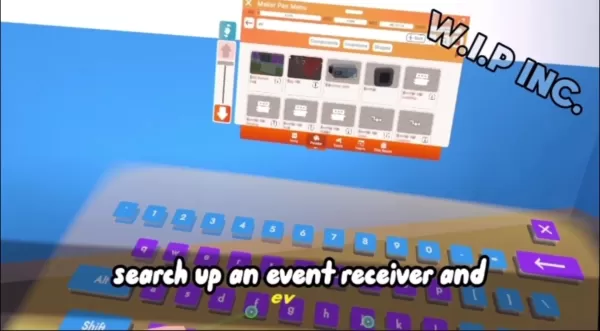 Learn to Build Basic AI with Wall Collision in Rec Room (2024 Guide)
Developing AI systems in Rec Room unlocks dynamic possibilities for immersive gameplay experiences. This comprehensive walkthrough demonstrates how to construct fundamental AI with collision detection, allowing your creations to interact realisticall
Learn to Build Basic AI with Wall Collision in Rec Room (2024 Guide)
Developing AI systems in Rec Room unlocks dynamic possibilities for immersive gameplay experiences. This comprehensive walkthrough demonstrates how to construct fundamental AI with collision detection, allowing your creations to interact realisticall
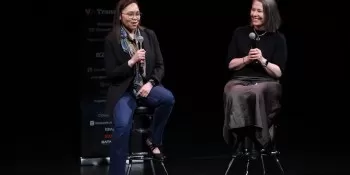 Walmart Achieves Enterprise AI Scale With Unified Framework Driving Thousands of Use Cases
Walmart is pioneering enterprise-scale implementation of autonomous AI systems through an engineering-driven approach to trust architecture. Their VP of Emerging Technology Desirée Gosby revealed at VB Transform 2025 how the retail leader operational
Walmart Achieves Enterprise AI Scale With Unified Framework Driving Thousands of Use Cases
Walmart is pioneering enterprise-scale implementation of autonomous AI systems through an engineering-driven approach to trust architecture. Their VP of Emerging Technology Desirée Gosby revealed at VB Transform 2025 how the retail leader operational
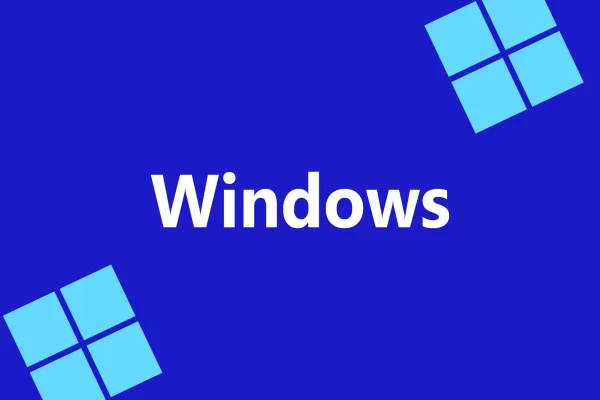 Windows Adds Support for AI App Interconnect Standard
Microsoft is doubling down on its AI strategy for Windows with two major developments: native integration of the Model Context Protocol (MCP) and the introduction of Windows AI Foundry. These foundational moves pave the way for Microsoft's vision of
Windows Adds Support for AI App Interconnect Standard
Microsoft is doubling down on its AI strategy for Windows with two major developments: native integration of the Model Context Protocol (MCP) and the introduction of Windows AI Foundry. These foundational moves pave the way for Microsoft's vision of
 August 27, 2025 at 10:32:46 PM EDT
August 27, 2025 at 10:32:46 PM EDT
Whoa, AI horror art is next-level creepy! 😱 Those surreal visuals legit gave me chills. Kinda makes you wonder if AI’s tapping into some dark corner of our minds we don’t even know about. Anyone else feel like these images could haunt their dreams?


 0
0
 August 4, 2025 at 2:48:52 AM EDT
August 4, 2025 at 2:48:52 AM EDT
This article on AI horror art is wild! Those creepy visuals really mess with your head, like something straight out of a nightmare. I’m both fascinated and freaked out by how AI can tap into our fears like that. 😱 Anyone else get chills from this?


 0
0
